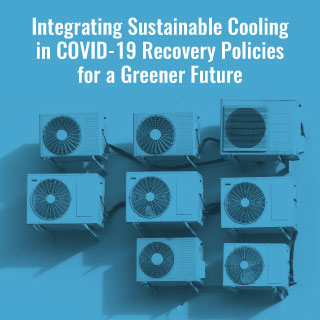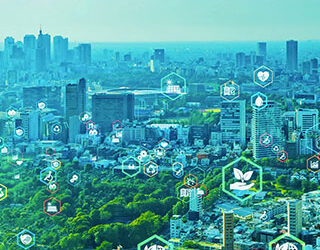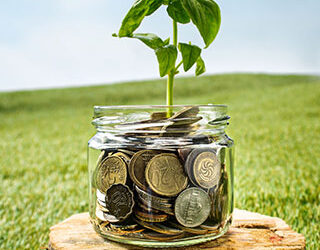Integrating Sustainable Cooling in COVID-19 Recovery Policies for a Greener Future

United Nations Environment Programme (UNEP), the leading environmental authority in the UN, organised a virtual panel discussion on 11 February 2021, to discuss ongoing initiatives on climate-friendly cooling and its impact in aiding economic recovery. The panellists comprised of acclaimed sustainability experts from various countries such as EU, Rwanda, Colombia and India – Juliet Kabera, Dr Satish Kumar, Karlis Goldstein, Johannes Heister and Alejandro Restrepo-Montoya. The discussion was moderated by Jessica Brown, Executive Director, Kigali Cooling Efficiency Programme. The Keynote speaker for the session was Stephane Crouzat, Ambassador for Climate Negotiations, Renewable Energy and Climate Risk Prevention, France.

Countries across the world are trying to stabilise their economies post the ravaging effects of the COVID-19 pandemic. However, to count as a positive effect, the pandemic has induced a reduction of almost 7% of global emissions in 2020. Therefore, in the wake of the pandemic, carbon neutrality has become the new horizon. It can be seen as a window of opportunity to build back better and aid economic recovery by decarbonising the economy. Also, after the gruelling years of climate inaction, the United States of America has made its way back to the Paris Agreement under Biden’s leadership. This can prove to be a game changer in the run up to COP 26. Consequently, governments and agencies around the globe are gearing to deliver on climate change mitigation.
In September 2020, the UK in partnership with International Finance Corporation, announced a 15-billion-pound fund as part of a new clean energy innovation facility to support developing countries and piloting innovative sustainable cooling technologies. Following suit, countries can support and shake conditional bailouts for hearted sectors that support sustainable cooling, including supporting manufacturers with ambitious decarbonisation plans. In the panel discussion, climate experts from across the globe discussed ways to accelerate the uptake of sustainable cooling for a green and resilient recovery.
Key Integrations:
- Energy efficient buildings – Improving energy performance of buildings can have a huge impact on the need for air conditioners and associated energy needed to provide cooling services. The way buildings are designed and built, including the choice of materials used in the construction is crucial. Low-cost passive cooling retrofit and construction will lead to accessible and affordable cool environment for the occupants. With buildings representing about 40% of total emissions in India and 25% in France, we must improve the energy efficiency of buildings and the equipment installed inside them. For example, France has put in place several support schemes for energy renovation which have been boosted by the recovery plan, particularly in the low-income households such as premiums, tax credits, reduced VAT down from 20% to 5.5% at zero interest rate.
- Urban greening – Urban environments have been hard hit by consequences of both global warming and COVID-19. Expanding urban greenery is a shovel ready opportunity to reduce the urban heat island effect, which is becoming exacerbated by a changing climate while also reducing air pollution and quickly creating jobs. For example, the city of Medellin in Colombia is a great case study for the world in terms of the benefits of urban greening factors. Green corridors lower temperatures by 3 degrees around various parts of the city, while providing work place training and apprenticeships for marginalised communities.
- Strengthening communities through cold chain management – With COVID-19 vaccines rolling out across the globe, sustainable cold chain logistics has become a vital concern. Additionally, prioritising healthy and nutritious food, along with thermal comfort for all, is one of the most important steps that we can take at the planetary level to embark on a sustainable and green recovery. It clearly goes hand in hand with the opportunity to reduce food loss and in turn, strengthen food security. Governments can support start-ups for cooling provision to vulnerable communities such as with sustainable cold storage in Nigeria. To tap into new financing opportunities, including the World Bank’s commitment meant to deploy $160 US billion over a 15-month period to help countries respond to immediate health needs and bolster economic recovery. 18 billion US dollars fund is dedicated to finance purchase and distribution of COVID-19 vaccines, tests and treatments, including cold chain infrastructure and seeks to embed energy efficiency measures within that. Dr Satish Kumar cited the example of India which is facing a cooling storm. It is a country of 1.3 billion people dominated by tropical climate and a rising middle class with high aspirations. India is pivoting from a green base to more of fruits, veggies and meat-based diet. The role of refrigeration in cold chain is going to become increasingly important as the country tries to vaccinate as well as feed one of the largest populations in the world.
- Research and development – Innovations in climate friendly, efficient technologies and business models are a major driver of economic growth and long-term decarbonisation. Sustainable business packages can champion the development and early deployment of innovations such as passive cooling designs, hyper efficient cooling technologies, novel refrigerants, renewable and off grid cooling solutions and nature-based cooling. R&D grants and loans offer innovative companies and countries competitive advantage and come at a relatively low cost compared to the investments needed, for example, for expanding power generation to keep up with growing cooling needs. Examples are the centres of excellence for cooling and cold chain currently under development in India and Rwanda.
- Financial planning – There’s a unique window of opportunity to tap into fiscal planning, and new financing models to accelerate the transition and increase access to sustainable cooling. Well planned and designed stimulus and recovery practice can accelerate the transition to sustainable cooling for all. These efforts cannot stop with recovery packages. Long term planning is needed, including a list of cooling assessments and policy mapping through national cooling action plans, development of decarbonisation strategies, structural technology investments such as district cooling networks and efficient renewable energy systems and the setup of effective policy standards and market transmission mechanisms. Through international cooperation, countries and other stakeholders can plan and promote action to get us to net zero emissions cooling drop by 2050.
“Countries and their governments must make the choice of a green recovery in line with the objectives of the Paris Agreement and the SDGs. Sustainable cooling is part of the solution. We have plenty of good examples to draw on in order to accelerate the transition to sustainable cooling.”
– Stephane Crouzat, Ambassador for Climate Negotiations, Renewable Energy and Climate Risk Prevention, France.
Shruti Saraf works as a Consultant for Alliances and Communications team at AEEE. She is an architect and has over four years of professional experience in the field of energy efficiency in the built environment.




